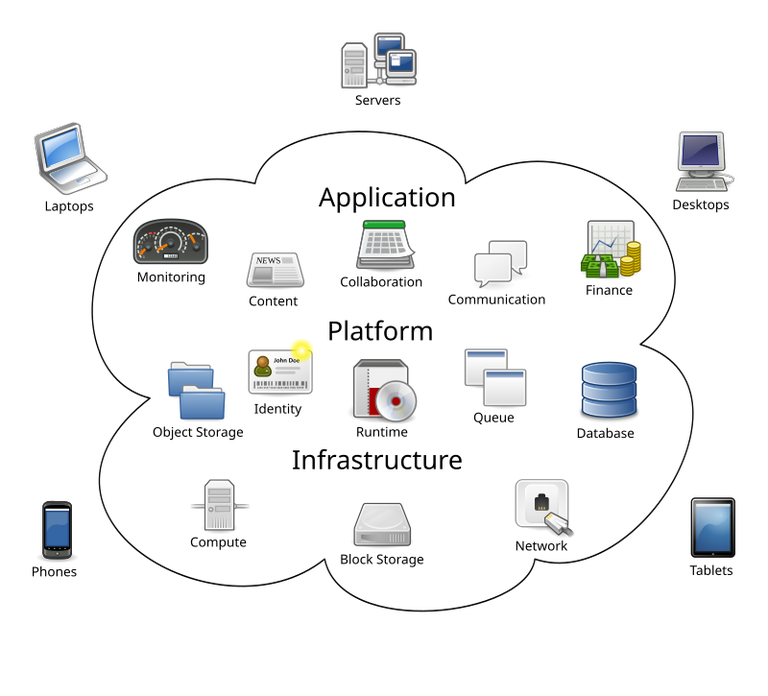The Future of Cloud Technology
- Overview
Cloud technology enables businesses to rapidly scale and adapt, accelerate innovation, increase business agility, simplify operations and reduce costs. Not only will this help businesses survive the current crisis, but it will also help improve long-term growth.
Many internet services are now cloud-based, and the physical infrastructure will not be able to support large enterprises. Business innovation relies heavily on cloud computing. Because of its agility and adaptability, cloud technology allows new ways of working, operating, and running businesses.
As cloud computing technology continues to gain traction across industries around the world, make sure your company is ready for this shift.
The future of cloud computing is characterized by a shift towards distributed, AI-driven, and hybrid/multi-cloud strategies, with a growing emphasis on edge computing and sustainability.
Cloud computing is expected to become more pervasive, driving business innovation and evolving from a technology platform to a key enabler of digital transformation.
These trends indicate that cloud computing is poised for continued growth and innovation, with a future characterized by greater intelligence, distribution, and adaptability.
Here's a more detailed look at the key trends:
1. AI-Driven Cloud Services:
- AI will be deeply integrated into cloud platforms, automating tasks, optimizing performance, and enhancing security.
- Expect more AI-powered tools for predictive analytics, automated workflows, and real-time data processing.
- AI will also play a role in managing cloud infrastructure, optimizing resource allocation, and reducing costs.
2. Edge Computing:
- Edge computing will bring processing power closer to the source of data, improving latency and enabling real-time applications.
- This is particularly important for IoT devices, smart cities, and other applications requiring immediate data processing.
- Distributed cloud infrastructure will become more prevalent, addressing the limitations of centralized cloud models.
3. Hybrid and Multi-Cloud Strategies:
- Businesses will increasingly adopt hybrid and multi-cloud approaches to leverage the benefits of different cloud providers and environments.
- This allows for greater flexibility, improved security, and optimized performance for specific workloads.
- Cloud orchestration and automation tools will simplify the management of complex multi-cloud environments.
4. Serverless Computing:
- Serverless computing, which allows developers to run code without managing servers, is expected to continue growing in popularity.
- This approach can lead to cost savings, increased agility, and reduced operational complexity.
5. Sustainability:
- Cloud providers are increasingly focusing on sustainable practices, such as using renewable energy and optimizing data center efficiency.
- This is driven by the growing awareness of the environmental impact of data centers and the increasing demand for environmentally responsible solutions.
6. Increased Data Storage Capacities:
- The demand for cloud data storage will continue to grow, leading to a massive increase in storage capacity.
- Cloud providers will focus on faster data access, improved security frameworks, and more efficient storage tiers.
7. Cloud-Native Practices:
- Cloud-native practices, such as microservices and containerization, will enable the development of more scalable, flexible, and resilient applications.
8. Evolving Role of Cloud Computing:
- Cloud computing is no longer just a technology platform; it's becoming the foundation for business innovation and digital transformation.
- Cloud-based services will be at the center of emerging technologies like AI, IoT, and quantum computing.
- Cloud Computing Is a Key Driver of Tech Innovation
Cloud computing is quickly becoming an essential component of transformation. Businesses that don't embrace this shift risk being left behind.
Cloud computing is evolving from a technology platform into a crucial driver of business innovation and digital transformation, with cloud-based services becoming central to emerging technologies like AI, IoT, and quantum computing.
This shift is fueled by the cloud's inherent flexibility, scalability, and accessibility, enabling businesses to adapt to changing needs and embrace new technologies more readily.
- Foundation for Innovation: Cloud computing provides the infrastructure and resources necessary for emerging technologies to thrive. AI, IoT, and quantum computing all rely on cloud's processing power, storage capacity, and data management capabilities.
- Digital Transformation Catalyst: Cloud adoption is no longer optional; it's essential for businesses seeking to modernize and remain competitive in the digital age.
- Enhanced Business Agility: Cloud-based services offer the flexibility and scalability needed to respond quickly to market changes and customer demands.
- Cost Efficiency: By leveraging the cloud, businesses can reduce infrastructure costs and operational burdens, freeing up resources for innovation.
- Emerging Technology Integration: The cloud acts as a bridge, connecting businesses with the latest advancements in AI, IoT, and quantum computing, enabling them to explore new possibilities and gain a competitive edge.
- Data Management and Analytics: Cloud computing facilitates efficient data storage, processing, and analysis, allowing businesses to gain valuable insights from their data and make more informed decisions.
- Improved Collaboration and Productivity: Cloud-based tools and platforms enable teams to collaborate more effectively, regardless of location, boosting productivity and innovation.
- Security and Compliance: Cloud providers are continually improving security measures and compliance capabilities, helping businesses protect their data and meet regulatory requirements.
[More to come ...]


